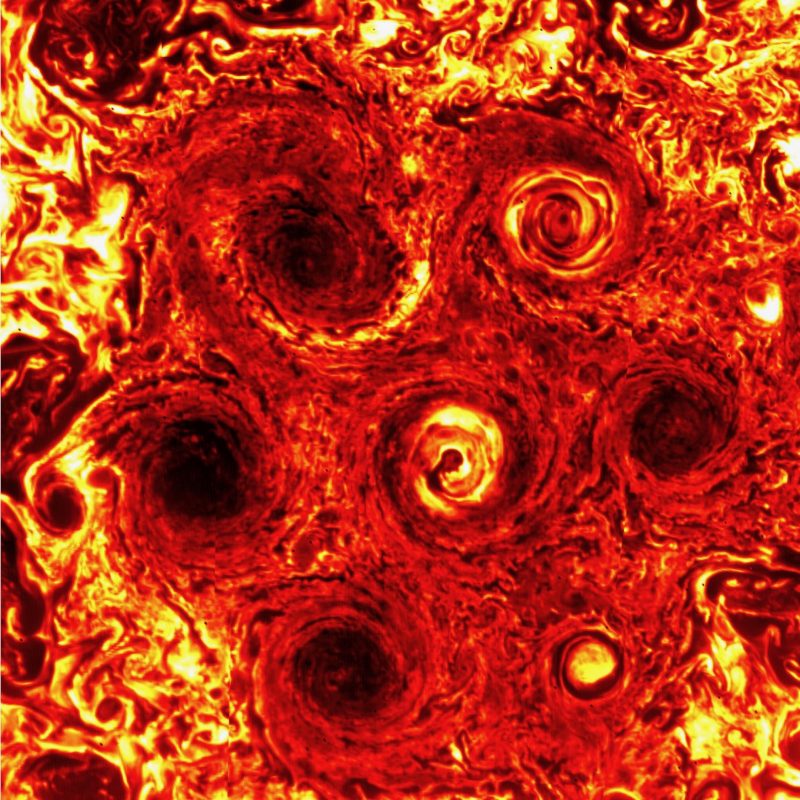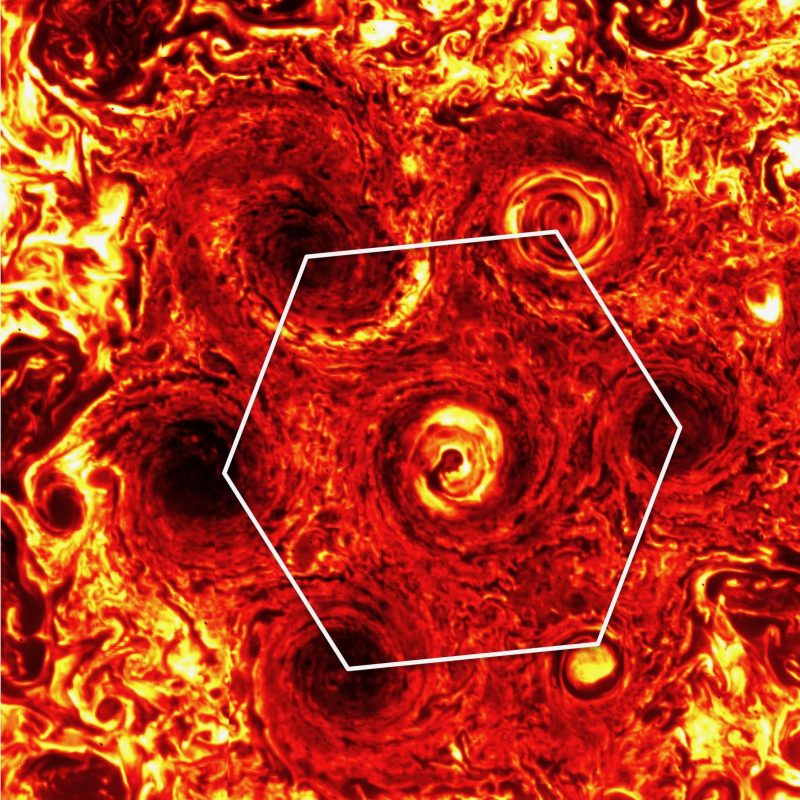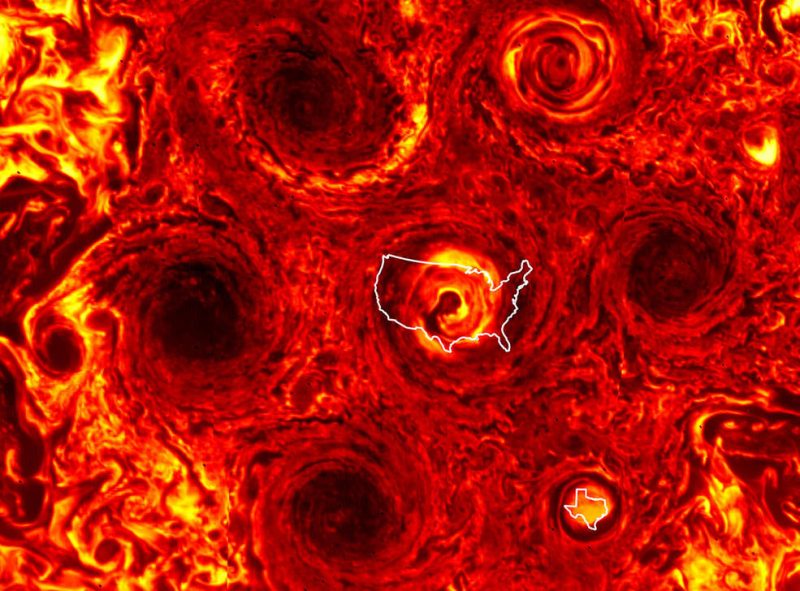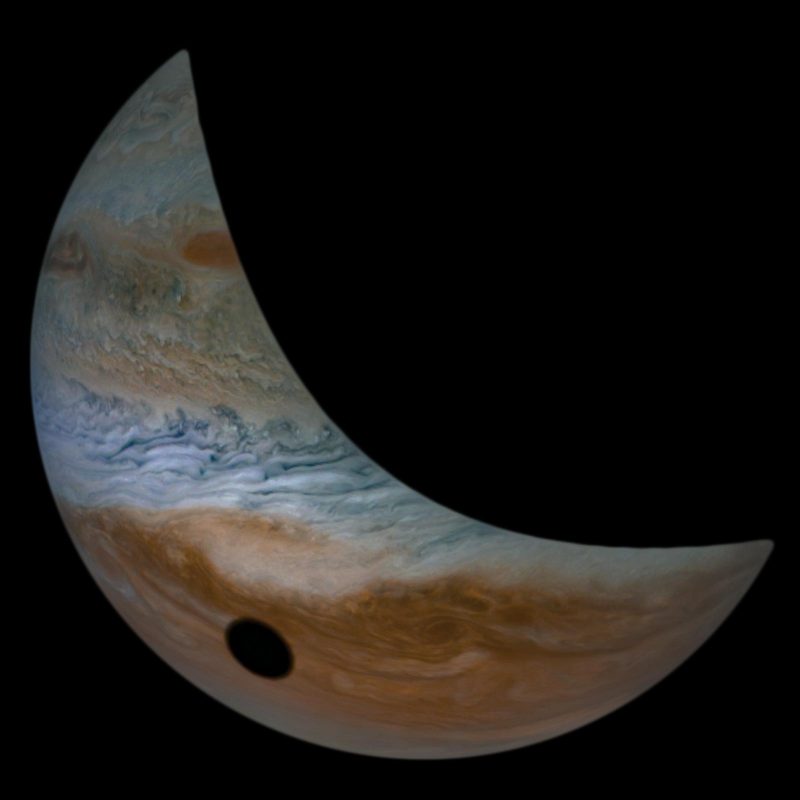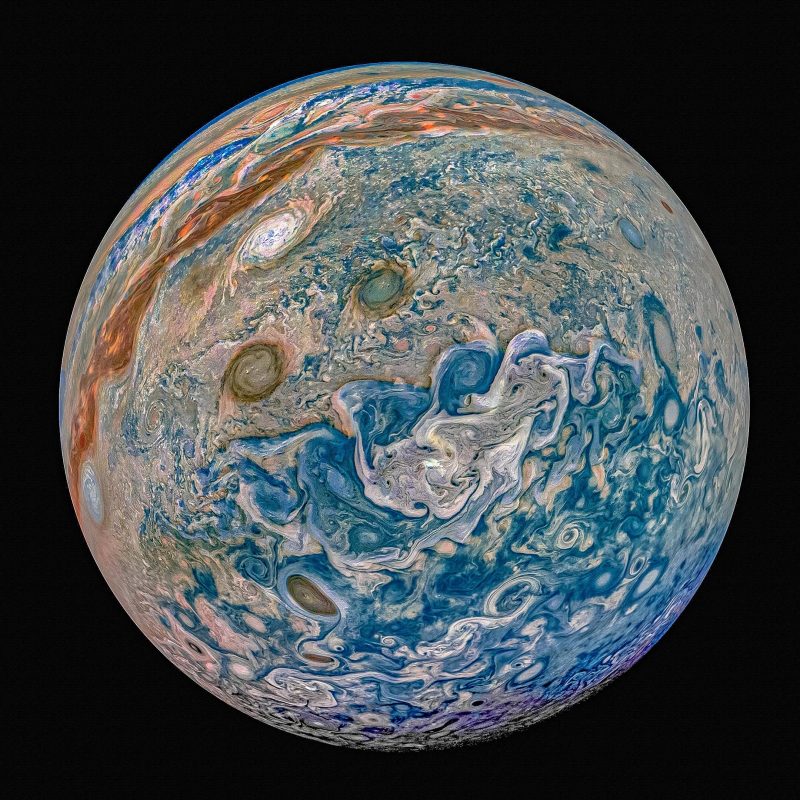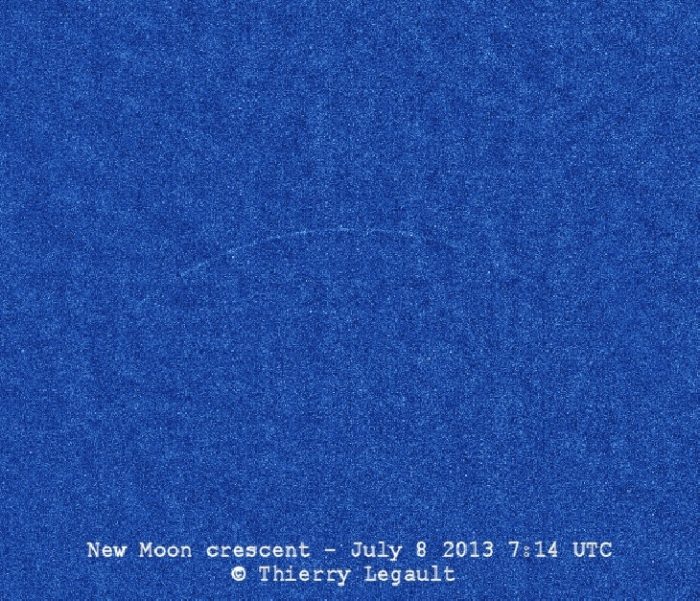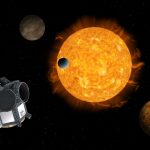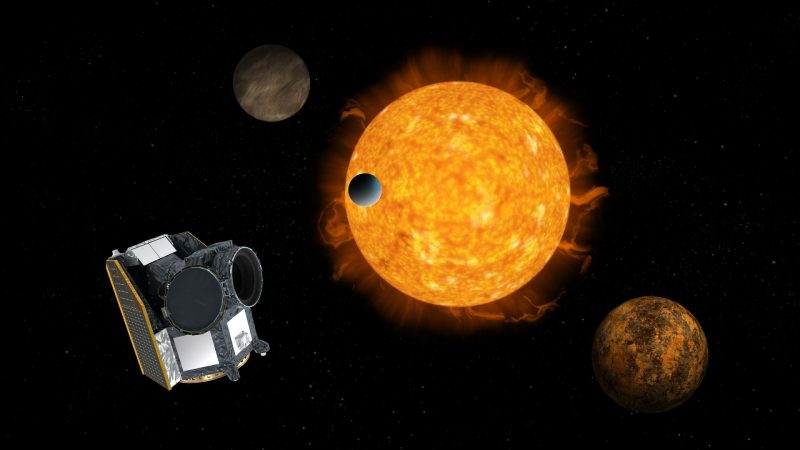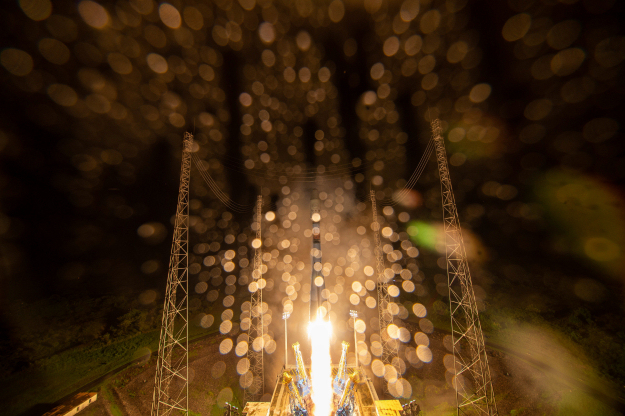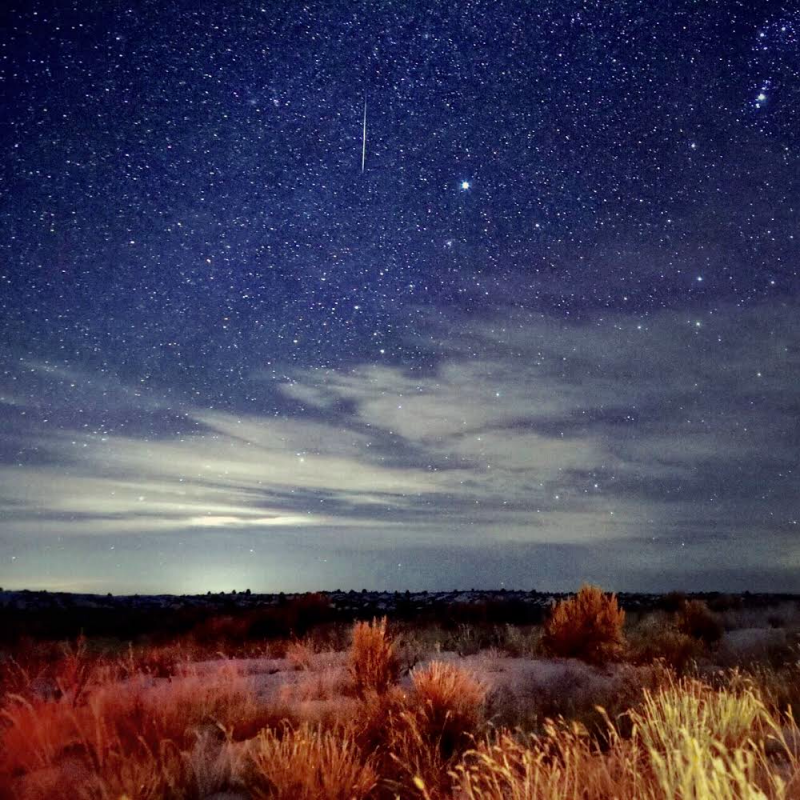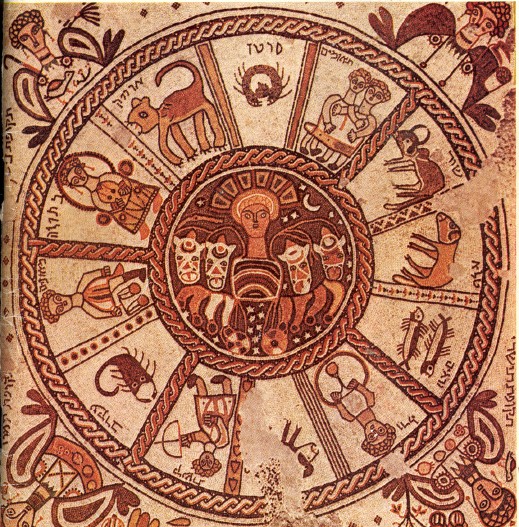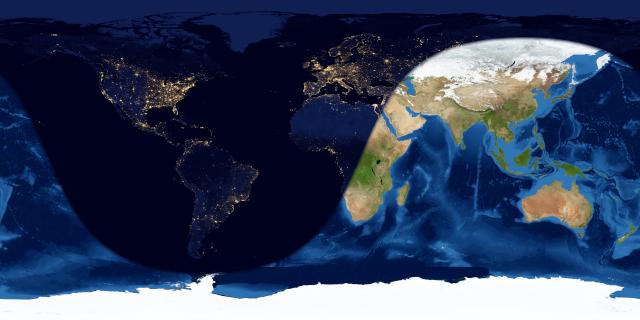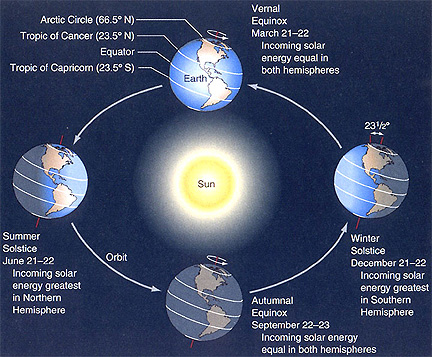On these December evenings, turn toward the northern sky and see its famous constellation Cassiopeia the Queen. In early December, Cassiopeia swings directly over Polaris, the North Star, at roughly 7 p.m. local clock time. Cassiopeia – sometimes called The Lady of the Chair – is famous for having the shape of a telltale W or M. You will find this configuration of stars as a starlit M whenever she reigns highest in the sky, hovering over Polaris.
At this time of year, Cassiopeia can also be seen from tropical and subtropical latitudes in the Southern Hemisphere. From there, the constellation appears low in the north around 7 to 8 p.m. on early December evenings. As for Polaris … from the Southern Hemisphere, it’s below the horizon.
Because Cassiopeia returns to the same spot in the sky about four minutes earlier with each passing day, or 1/2 hour earlier with each passing week, look for Cassiopeia to be at her high point over Polaris, the North Star, around 6 p.m. in early January.
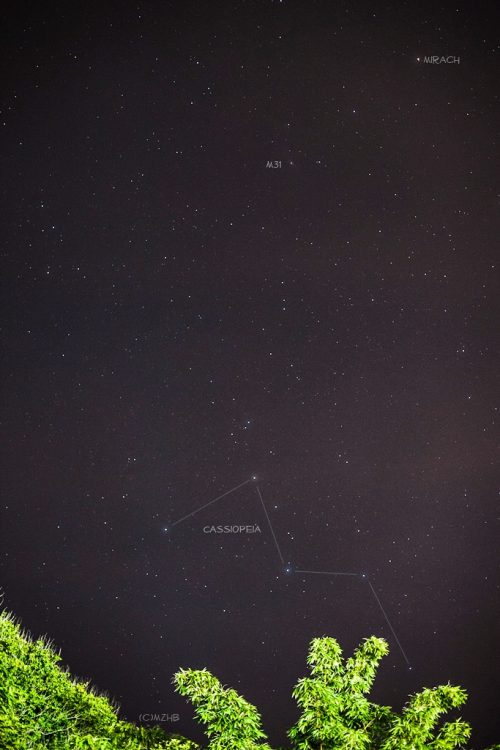
Zefri Besar in Brunei Darussalam caught Cassiopeia and the Andromeda galaxy in November 2016, using a DSLR camera and 50mm lens. Notice that – no matter how they are oriented in the sky – the deeper “V” of Cassiopeia points toward the galaxy.
From a dark country sky, you’ll see that Cassiopeia sits atop the luminous band of stars known as the Milky Way. Arching from horizon to horizon, this soft-glowing boulevard of stars represents an edgewise view into the flat disk of our own Milky Way galaxy. When Cassiopeia climbs above Polaris, the North Star, on these dark winter evenings, note that this hazy belt of stars that we call the Milky Way extends through the Northern Cross in the western sky and past Orion the Hunter in your eastern sky.
This Milky Way is fainter than the glorious broad band of the Milky Way we see in a Northern Hemisphere summer or Southern Hemisphere winter. That’s because, at the opposite side of the year, we are looking toward the star-rich center of the galaxy. On these December nights, we are looking toward the galaxy’s outer edge, not the center.
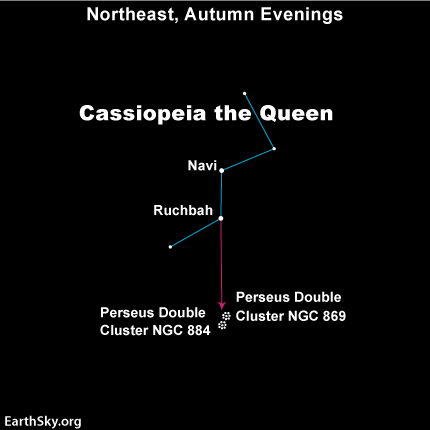
The famous Double Cluster in the constellation Perseus is not far from Cassiopeia on the sky’s dome. This chart shows how to use the W or M shape of Cassiopeia to find the Double Cluster. To appreciate the clusters fully, look with your binoculars in a dark sky! More about the Double Cluster here.
As the night marches onward, Cassiopeia – like the hour hand of a clock – circles around the North Star, though in a counter-clockwise direction.
By dawn, you will find Cassiopeia has swept down in the northwest – to a point below the North Star. At that time, if you’re at a southerly latitude, such as the far south U.S., you might not be able to see Cassiopeia. The constellation might be below your horizon. But if you’re located at a latitude like those in the northern U.S., you will still see Cassiopeia sitting on or near your northern horizon.
Look northward on these cold December evenings to see Queen Cassiopeia sitting proudly on her throne, atop the northern terminus of the Milky Way!

Queen Cassiopeia, aka The Lady of the Chair. Image via Hubble Source.
Bottom line: Watch for Cassiopeia the Queen on these December evenings. The constellation is shaped like an M or W. You’ll find Cassiopeia in the northeast at nightfall, sweeping higher in the north as evening progresses.
EarthSky lunar calendars are cool! They make great gifts. Order now. Going fast!
from EarthSky https://ift.tt/2zIlQk8
On these December evenings, turn toward the northern sky and see its famous constellation Cassiopeia the Queen. In early December, Cassiopeia swings directly over Polaris, the North Star, at roughly 7 p.m. local clock time. Cassiopeia – sometimes called The Lady of the Chair – is famous for having the shape of a telltale W or M. You will find this configuration of stars as a starlit M whenever she reigns highest in the sky, hovering over Polaris.
At this time of year, Cassiopeia can also be seen from tropical and subtropical latitudes in the Southern Hemisphere. From there, the constellation appears low in the north around 7 to 8 p.m. on early December evenings. As for Polaris … from the Southern Hemisphere, it’s below the horizon.
Because Cassiopeia returns to the same spot in the sky about four minutes earlier with each passing day, or 1/2 hour earlier with each passing week, look for Cassiopeia to be at her high point over Polaris, the North Star, around 6 p.m. in early January.

Zefri Besar in Brunei Darussalam caught Cassiopeia and the Andromeda galaxy in November 2016, using a DSLR camera and 50mm lens. Notice that – no matter how they are oriented in the sky – the deeper “V” of Cassiopeia points toward the galaxy.
From a dark country sky, you’ll see that Cassiopeia sits atop the luminous band of stars known as the Milky Way. Arching from horizon to horizon, this soft-glowing boulevard of stars represents an edgewise view into the flat disk of our own Milky Way galaxy. When Cassiopeia climbs above Polaris, the North Star, on these dark winter evenings, note that this hazy belt of stars that we call the Milky Way extends through the Northern Cross in the western sky and past Orion the Hunter in your eastern sky.
This Milky Way is fainter than the glorious broad band of the Milky Way we see in a Northern Hemisphere summer or Southern Hemisphere winter. That’s because, at the opposite side of the year, we are looking toward the star-rich center of the galaxy. On these December nights, we are looking toward the galaxy’s outer edge, not the center.

The famous Double Cluster in the constellation Perseus is not far from Cassiopeia on the sky’s dome. This chart shows how to use the W or M shape of Cassiopeia to find the Double Cluster. To appreciate the clusters fully, look with your binoculars in a dark sky! More about the Double Cluster here.
As the night marches onward, Cassiopeia – like the hour hand of a clock – circles around the North Star, though in a counter-clockwise direction.
By dawn, you will find Cassiopeia has swept down in the northwest – to a point below the North Star. At that time, if you’re at a southerly latitude, such as the far south U.S., you might not be able to see Cassiopeia. The constellation might be below your horizon. But if you’re located at a latitude like those in the northern U.S., you will still see Cassiopeia sitting on or near your northern horizon.
Look northward on these cold December evenings to see Queen Cassiopeia sitting proudly on her throne, atop the northern terminus of the Milky Way!

Queen Cassiopeia, aka The Lady of the Chair. Image via Hubble Source.
Bottom line: Watch for Cassiopeia the Queen on these December evenings. The constellation is shaped like an M or W. You’ll find Cassiopeia in the northeast at nightfall, sweeping higher in the north as evening progresses.
EarthSky lunar calendars are cool! They make great gifts. Order now. Going fast!
from EarthSky https://ift.tt/2zIlQk8


